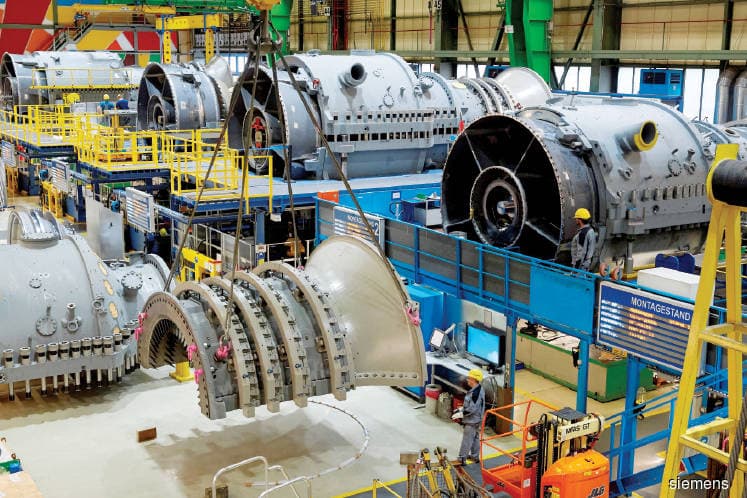
This article first appeared in The Edge Financial Daily on May 30, 2018
BERLIN: Siemens AG is hopeful of clinching orders from Malaysia for its new HL-class gas turbine within three years, noting the country was its first customer in Southeast Asia for the H-class previously.
The advanced HL-class turbine combines a series of new but already tested technologies and design features with the best of past experience, clearing the way for efficiency levels beyond 63% with a mid-term goal of reaching 65%.
Thomas Hagedorn, head of sales for Asia-Pacific at the German technology giant’s power and gas division, said the group regards Malaysia as an important market because of its readiness to adopt new technology.
“We have quite a lot of gas turbine installations in Malaysia,” Hagedorn told The Edge Financial Daily during a recent press tour of Siemens’ power and gas turbine plant in the German capital.
“For our new machine (HL-class), I hope that Malaysia proves it again by taking up that machine, because previously Malaysia was the first country to take up the 50mw H-class machine.
“I think the next combined cycle project there (in Malaysia) will [involve] our HL-class machine. Most probably in the near term, within two to three years,” he said.
Hagedorn said Siemens, with more than 65 years of experience in gas turbine manufacturing, designed the HL-class turbine “to meet customers’ challenges about conventional or renewable energy in a dynamic market environment”.
These include the latest emissions reduction technology, availability improvements and control system upgrades, as well as power and efficiency improvements and lifetime extension programmes.
“Global trends are creating our market challenges in terms of the public acceptance, reliable power supply, economic and resource efficiencies, and climate protection.
“We are trying to keep our customers up to date. With our latest upgrade and investment in gas turbine technology and business, it helps us to drive the future, so our customers in Malaysia can use it.
“We know [about] every market’s environment and the particular economic and ecological requirements. The HL-class gas turbine is paving the way to the next level of efficiency and performance,” said Hagedorn.
Launched in 2017, the total investment for the HL-class turbine is roughly equivalent to the investment made to produce the H-class machine, about €500 million, he said.
The evolutionary development for the HL-class is derived from the proven Siemens H-class technology, combining a series of new but already tested technologies from the US and Japan.
These include efficient internal cooling features for blades and vanes and an advanced combustion system to increase firing temperature.
The new Siemens’ HL-class consists of three engines — SGT5-8000HL, SGT5-9000HL and SGT6-9000HL — with the combined power output of 388mw to 567mw.
Hagedorn said power generation worldwide would still be dominated by conventional generation in 2040, with a shift from coal to gas because a coal-fired power plant is only capable of operating at the minimum load, whereas a gas-fired power plant caters for a heavier load.
“In spite of declining share from 37% in 2017 to 31% in 2040 for coal and decarbonisation efforts, coal will remain the dominant fuel as it is cheap compared to gas,” he said.
Hagedorn also noted the global installed capacity of power plants is expected to almost double between 2017 and 2040, with 60% of the capacity addition to come from Southeast Asia.
“Our gas turbine is operating in more than 60 countries and we provide proven technology with more than 7,000 installed heavy duty, industrial and aeroderivative gas turbines.
“We help our customers to operate conventional power plants and with technologies for renewable energy, we pave the way for a sustainable energy mix,” Hagedorn added.
Specifically, on its SGT-8000H series (H-class), 88 gas turbines were under contract with 65 units in commercial operation across the US, Europe, Africa and Asia. This adds up to a fleet experience of more than 650,000 fired hours globally.
Of this, Malaysia has a total of six H-class gas turbines installed — two in Tenaga Nasional Bhd’s combined cycle power plant in Perai, Penang, and four in Petronas’ cogeneration power plant in Pengerang, Johor.